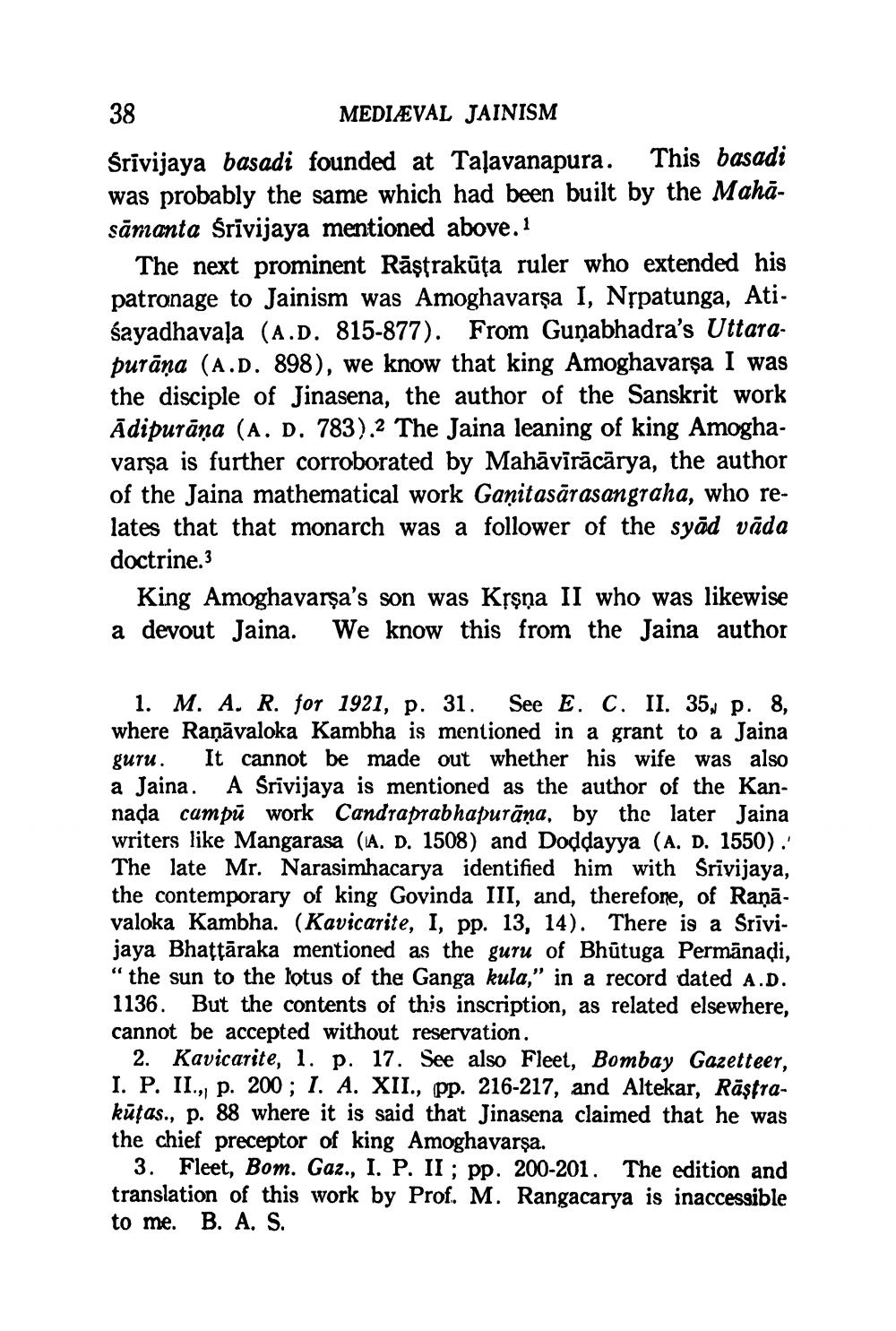________________
38
MEDIEVAL JAINISM
Śrīvijaya basadi founded at Talavanapura. This basadi was probably the same which had been built by the Mahāsamanta Śrīvijaya mentioned above. 1
The next prominent Răştrakūta ruler who extended his patronage to Jainism was Amoghavarsa I, Nṛpatunga, Atiśayadhavala (A.D. 815-877). From Gunabhadra's Uttarapurāna (A.D. 898), we know that king Amoghavarṣa I was the disciple of Jinasena, the author of the Sanskrit work Adipurāna (A. D. 783).2 The Jaina leaning of king Amoghavarsa is further corroborated by Mahāvīrācārya, the author of the Jaina mathematical work Ganitasarasangraha, who relates that that monarch was a follower of the syād vāda doctrine.3
King Amoghavarşa's son was Kṛṣṇa II who was likewise a devout Jaina. We know this from the Jaina author
1. M. A. R. for 1921, p. 31. See E. C. II. 35, p. 8, where Raṇāvaloka Kambha is mentioned in a grant to a Jaina guru. It cannot be made out whether his wife was also a Jaina. A Śrīvijaya is mentioned as the author of the Kannaḍa campu work Candraprabhapurāna, by the later Jaina writers like Mangarasa (A. D. 1508) and Doddayya (A. D. 1550). The late Mr. Narasimhacarya identified him with Srivijaya, the contemporary of king Govinda III, and, therefore, of Raṇāvaloka Kambha. (Kavicarite, I, pp. 13, 14). There is a Śrīvijaya Bhaṭṭāraka mentioned as the guru of Bhūtuga Permānadi, "the sun to the lotus of the Ganga kula," in a record dated A.D. 1136. But the contents of this inscription, as related elsewhere, cannot be accepted without reservation.
2. Kavicarite, 1. p. 17. See also Fleet, Bombay Gazetteer, I. P. II., p. 200; I. A. XII., pp. 216-217, and Altekar, Răştrakūtas., p. 88 where it is said that Jinasena claimed that he was the chief preceptor of king Amoghavarsa.
3. Fleet, Bom. Gaz., I. P. II; pp. 200-201. The edition and translation of this work by Prof. M. Rangacarya is inaccessible to me. B. A. S.




